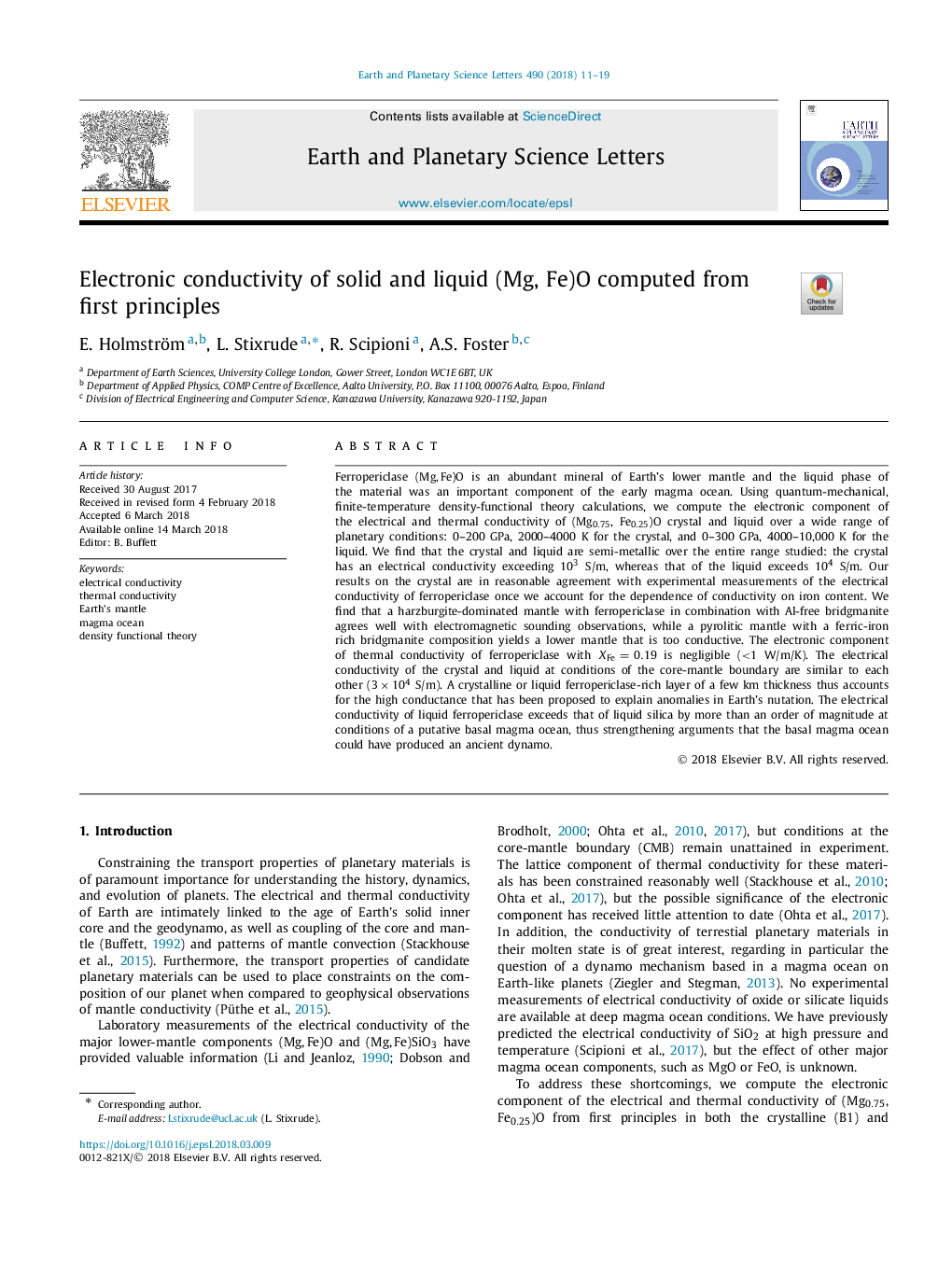| Article ID | Journal | Published Year | Pages | File Type |
|---|---|---|---|---|
| 8906962 | Earth and Planetary Science Letters | 2018 | 9 Pages |
Abstract
Ferropericlase (Mg,âFe)O is an abundant mineral of Earth's lower mantle and the liquid phase of the material was an important component of the early magma ocean. Using quantum-mechanical, finite-temperature density-functional theory calculations, we compute the electronic component of the electrical and thermal conductivity of (Mg0.75, Fe0.25)O crystal and liquid over a wide range of planetary conditions: 0-200 GPa, 2000-4000 K for the crystal, and 0-300 GPa, 4000-10,000 K for the liquid. We find that the crystal and liquid are semi-metallic over the entire range studied: the crystal has an electrical conductivity exceeding 103 S/m, whereas that of the liquid exceeds 104 S/m. Our results on the crystal are in reasonable agreement with experimental measurements of the electrical conductivity of ferropericlase once we account for the dependence of conductivity on iron content. We find that a harzburgite-dominated mantle with ferropericlase in combination with Al-free bridgmanite agrees well with electromagnetic sounding observations, while a pyrolitic mantle with a ferric-iron rich bridgmanite composition yields a lower mantle that is too conductive. The electronic component of thermal conductivity of ferropericlase with XFe=0.19 is negligible (<1 W/m/K). The electrical conductivity of the crystal and liquid at conditions of the core-mantle boundary are similar to each other (3Ã104 S/m). A crystalline or liquid ferropericlase-rich layer of a few km thickness thus accounts for the high conductance that has been proposed to explain anomalies in Earth's nutation. The electrical conductivity of liquid ferropericlase exceeds that of liquid silica by more than an order of magnitude at conditions of a putative basal magma ocean, thus strengthening arguments that the basal magma ocean could have produced an ancient dynamo.
Keywords
Related Topics
Physical Sciences and Engineering
Earth and Planetary Sciences
Earth and Planetary Sciences (General)
Authors
E. Holmström, L. Stixrude, R. Scipioni, A.S. Foster,
